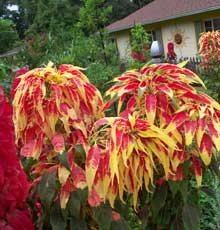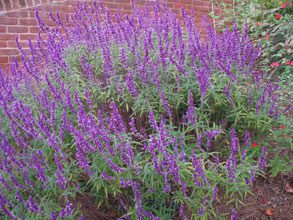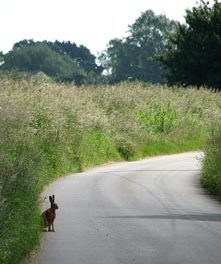 You can’t open a gardening magazine or book these days without reading about home fruit and veggie gardening, and especially integrating food plants in with your ornamentals. Personally, I have not always had great luck with that. Sometimes it works for me and other times not.
You can’t open a gardening magazine or book these days without reading about home fruit and veggie gardening, and especially integrating food plants in with your ornamentals. Personally, I have not always had great luck with that. Sometimes it works for me and other times not.
Back in December my husband asked me what the horrible looking yellow green blob in the garden was and it turned out to be an eggplant – well, beyond its better days. It had been hidden by the growth of the surrounding plants and you know what they say about “out of sight…”
Recently I learned about the benefits of the Amaranth family of plants and discovered they possess both decorative and edible qualities. A gardening friend from Florida grows a number of different varieties; the colorful leaves look terrific in his flower beds and make some very attractive (and tasty) salads! Apparently, they taste like fresh spinach and you can even cook with them.
Amaranths were used as staple food crop by the pre-Columbian Aztecs and by various early Asian civilizations. In addition to nutritious leaves, the seeds, which are actually a grain, were used as flours and cereals. While similar to other greens, such as spinach and beets, Amaranth leaves contain significantly more calcium and niacin and are rich in other nutrients like carotene, vitamin C and iron. The grains too are rich in potassium, calcium, zinc, magnesium and amino acids and they are an excellent source of lean protein. The tiny grains can also be popped like corn and you will often find amaranth in cereals.
We are probably most familiar with the annual celosia or cockscombs that turn up in the garden centers each spring. Others have names like ‘Joseph’s Coat,’ also called the summer Poinsettia. The Baker Creek Heirloom Seed Catalog lists 18 different varieties and I am pretty sure that is only a small selection of what’s out there. Some are obviously better grain producers and others have more colorful leaves, but they are all good. Just read the descriptions in your seed catalogs carefully to determine the dominant characteristics of the different varieties. One called ‘Love Lies Bleeding,’ which dates to the 1700’s, produces long drooping panicles of red flowers (hence the name?) and subsequently seeds that are much loved by birds also. Some plants like ‘Tricolor Aurora’ have bright yellow leaves, others are in various shades of red and some come in plain old green. Amaranths range in size from about 6 inches to 8 feet tall. These are heat and sun loving plants and are among the easiest to grow from seed. You can direct sow the seeds in your garden as soon as the soil warms. For an earlier crop start the tiny seeds indoors and move them outside later.
If you are so inclined to mix up the edibles with the pretties this summer, do consider the dual purpose amaranths. Anything that both looks and tastes good is a winner, and as with most of the ancient plants, this one has survived over the centuries because it is drought tolerant, a very positive characteristic. I can’t wait to serve my first salad with the leaves of ‘Joseph’s Coat’ or one called ‘Molten Fire’ sprinkled on top. These colorful edibles will never get lost in your garden.







